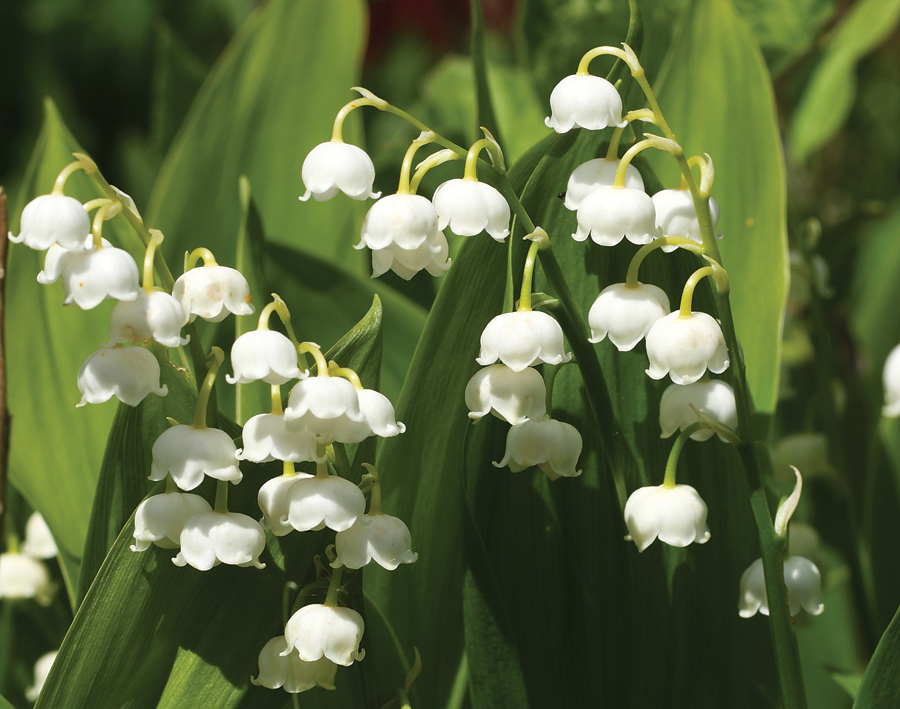Lily of the valley is a fragrant garden flower. Each blossom is shaped like a tiny bell. It grows in North America, Europe, and northern Asia. Wild lily of the valley grows in the southern Allegheny regions of eastern North America. The lily of the valley has traditionally been considered one of the flowers of the month of May. It is called the may bell in Germany.

The beautiful bell-shaped flowers are pure white. They hang down in a long cluster along a slender stem. The flower stalk rises from a rhizome (underground stem). Each stalk usually has two or three wide, oblong leaves. The fruit of the plant is a red berry about 1/4 inch (6 millimeters) in diameter. The plant requires rich, well-drained soil with leaf mold and grows well in shade.
Lily of the valley is a perennial plant, flowering naturally in late spring. In greenhouses, it blooms during all seasons. Professional growers keep the plant’s rhizome, called a pip, frozen at temperatures from 25 to 28 °F (–4 to –2 °C) until it is planted for flowering. The plant will grow outdoors for many years without needing to be moved. In greenhouses, it should be kept at a temperature of about 65 °F (18 °C) in order to bloom.
Lily of the valley is famous for its fragrance. A French perfume called eau d’or is made from the flowers.
